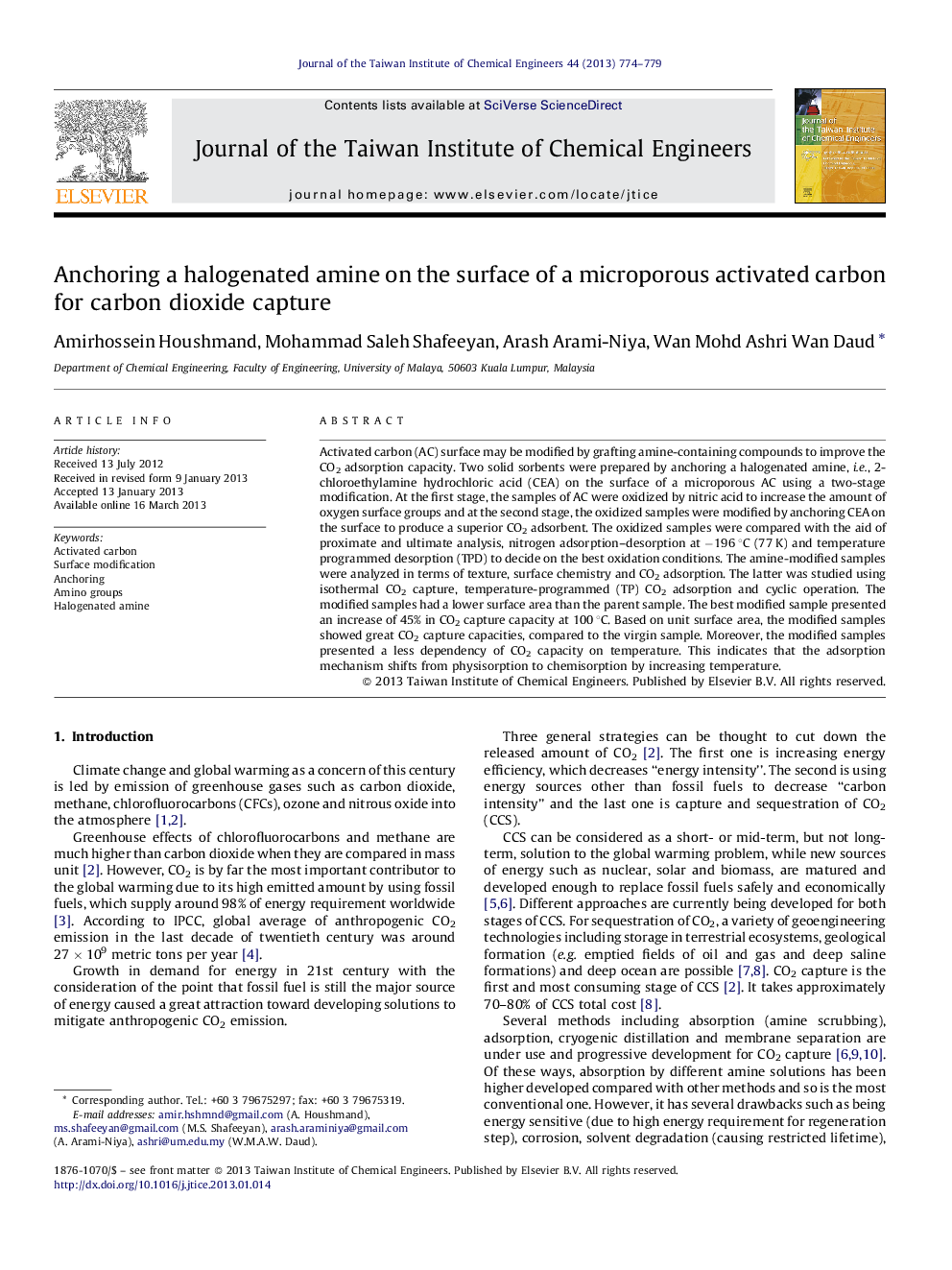| Article ID | Journal | Published Year | Pages | File Type |
|---|---|---|---|---|
| 690850 | Journal of the Taiwan Institute of Chemical Engineers | 2013 | 6 Pages |
Activated carbon (AC) surface may be modified by grafting amine-containing compounds to improve the CO2 adsorption capacity. Two solid sorbents were prepared by anchoring a halogenated amine, i.e., 2-chloroethylamine hydrochloric acid (CEA) on the surface of a microporous AC using a two-stage modification. At the first stage, the samples of AC were oxidized by nitric acid to increase the amount of oxygen surface groups and at the second stage, the oxidized samples were modified by anchoring CEA on the surface to produce a superior CO2 adsorbent. The oxidized samples were compared with the aid of proximate and ultimate analysis, nitrogen adsorption–desorption at −196 °C (77 K) and temperature programmed desorption (TPD) to decide on the best oxidation conditions. The amine-modified samples were analyzed in terms of texture, surface chemistry and CO2 adsorption. The latter was studied using isothermal CO2 capture, temperature-programmed (TP) CO2 adsorption and cyclic operation. The modified samples had a lower surface area than the parent sample. The best modified sample presented an increase of 45% in CO2 capture capacity at 100 °C. Based on unit surface area, the modified samples showed great CO2 capture capacities, compared to the virgin sample. Moreover, the modified samples presented a less dependency of CO2 capacity on temperature. This indicates that the adsorption mechanism shifts from physisorption to chemisorption by increasing temperature.
► Anchoring a halogenated amine was applied for modification of ACs with amino groups. ► Grafting of amine compounds on the surface was used to enhance CO2 capture capacity. ► The modified samples presented higher CO2 uptake compared to the virgin sample. ► Oxidation preceding anchoring lead to a less dependency of CO2 uptake on temperature. ► Cyclical operations indicated a good performance stability of the modified samples.
